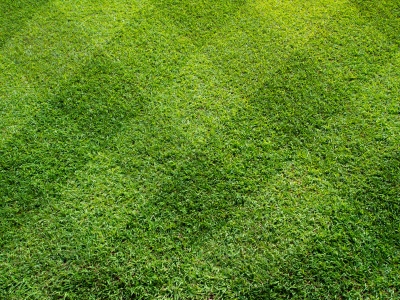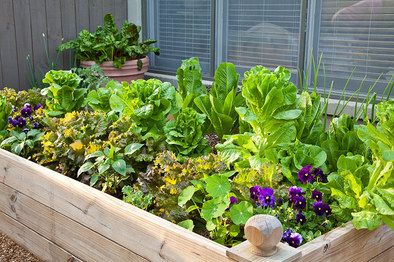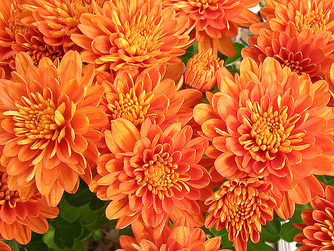 As cheerful as those dandelions seem with their bright yellow heads or fluffy globe tops, they can easily overtake the grass in your lawn and the surrounding flowers in your garden. The broadleaf weed will drink up water and nutrients that are needed by your grass and flowers. Getting dandelions under control is helpful for the long-term growth of your yard, but it can be quite difficult as their fluffy seeds can easily float far throughout your property. Being patient and persistent will be key for you to rid your property of dandelions. There are a few methods to manage dandelions and it’s important to understand that none of them are truly permanent. Dandelion seeds can travel miles with the help of wind. So, even when you think the problem is solved forever, new dandelions may have taken root on your property. Knowing how to kill or remove them when you first see them will preserve your lawn and garden. Pre-emergent A pre-emergent is a chemical that prevents seeds from germinating. It should be applied your lawn or flower bed in late winter for dandelion control, as it’s only effective if used before dandelion seeds have had a chance to germinate. So now that you realize you’ve missed the boat on that, consider your other options. Herbicide A selective broadleaf herbicide will only kill broadleaf weeds – including dandelions – without killing your grass. This makes a broadleaf herbicide the ideal choice for ridding dandelions in lawns. Non-selective herbicide will kill any plant that it comes in contact with – including your grass. “Round-up” and similar herbicide products (made of glyphosate), is the most common type of this kind of herbicide which is ideal for spot dandelion removal (in a patio, walkway, garden bed). Herbicides of any kind will work best if applied prior to the flower developing. Once a dandelion has flowered, it’s far more resistant to herbicides. Hand-pull Dandelions The most effective option for controlling dandelions is to pull them out by hand. Of course, this is also the most time-consuming method. This should be done right when the first dandelions appear in spring. Using gloves with rubber fingers or special tools like “dandelion pullers” can be helpful with digging up weeds by hand, as you must remove the entire taproot of the dandelion (and the can be big and deep!). Whichever method(s) you choose for minimizing dandelions on your property, just remember that the best thing you can continue to do is prevent the dandelions from going to seed. Once those fluffy globe heads filled with seeds appear, the amount of dandelions you’ll be fighting will only multiply.
0 Comments
Most people seem to think fall landscaping is all about the cleanup; removal of leaves and debris that start falling. While a thorough fall cleanup is important in late fall, we at Gardenin' Angels have always felt that autumn is the most opportune time to plant and care for your lawn and garden. The soil and ground temperature is perfect for planting and transplanting and the New England weather is pleasant to work in. There's also typically good rainfall and robust root activity of your plants and shrubs in fall.
We love this article "Get Ready for Fall Planting" from This Old House because it has great advice on fall care for your lawn, trees and shrubs, annuals and perennials and leaves. Check it out HERE.  It doesn't feel like fall weather in Massachusetts just yet, but it is nearly here. Fall is probably the best time for landscaping your property. Whether you're adding new plantings, transplanting old ones or treating your lawn, fall provides comfortable temperatures for you to work outdoors as well as the perfect temperature of ground soil to work with your plants, flowers and turf. As far as lawn care in the fall, it's an ideal time to apply a balanced granular fertilizer that will help your lawn recover from summer stress. If you'r lawn has become dry or even changed from green to a more yellow or brown color, fertilizer and more frequent watering can help. After applying fertilizer, your lawn color will improve within 1-2 weeks with adequate watering or rainfall. This will bring back the vibrant green turf that may have waned with the summer heat. It's also a good time to spot treat any broadleaf weeds that may be present. If you do this, you'll notice weeds will curl up within 2-4 days and slowly decline. After applying fertilizer and weed treatment, avoid mowing the following days and avoid watering for 2-4 hours if weeds are present. Water your lawn within 7 days if it doesn't rain to help the fertilizer penetrate your grass. Early fall lawn care suggestions: Mowing Your lawn should be mowed frequently enough so that only 1/3 of the leaf blade is being cut off at one time. Overcutting your grass will hinder it's growth. Watering You should continue watering regularly for all sunny lawns. Frequency and quantity of watering needed will depend on rainfall frequency and your lawn’s grass types and soil composition. Patching If you have bare spots on your lawn, or even a large area of your property that you now want to add turf to, early fall is a great time to do so. This is because the ground temperature and climate are ideal. Read our previous blog on how to do this HERE. If you have any questions or concerns about your lawn, call Gardenin' Angels at 774 284 1171.  By now you may have forgotten about the blooms that graced your garden this past spring (those beautiful tulips, daffodils, iris). But, now that we’re nearing the end of summer and those plants are dormant, it’s becoming a perfect time for dividing or transplanting. You may want to transplant flowers because they have flourished to the point of overcrowding, or simply to add flowers to another area of your property (or a friend’s!) once they’re established. If your spring flowers have outgrown their space, transplanting them now – late-summer to mid-fall – gives them time to adjust to their new environment prior to the cold weather. But note, while this is the time to transplant spring flowers, it’s not yet ideal to move any summer blooms! By moving the bulbs during their dormant period, you avoid disturbing their natural growing process. If you want to divide or transplant summer flowers, wait until late-fall after their foliage dies away or even early-spring next year. Digging up the plant will result in some root loss, so you'll want to reduce stress on the plant as much as possible. When transplanting, choose a day that's overcast or even rainy which minimizes stress caused by heat and extremely sunny conditions. You may also want to remove most of the foliage so there will be less of a demand on the roots to supply water to the plant. You can divide a perennial and leave part of it growing where it is, moving a piece of it to another location. Or, if the size of the mature plant has completely outgrown its space, you can remove the entire plant from the root, divide it and place both divisions somewhere else where they can thrive. Once you re-plant the perennial, apply three to four inches of mulch around its base and water it thoroughly. Check on the plant every few days; if the top few inches of soil are dry, water again, being careful not to overwater.  Think you have to live on a farm to grow vegetables? Think again. People in rural, suburban, and even urban areas with small landscapes, have success in growing vegetables in raised garden beds. Some of the best tomatoes I've had are from a friend's very small garden on a main street in Brockton. Raised-bed gardening is a great way to grow vegetables. It does not require much space and can be incorporated into your existing landscape easily. A raised garden bed works well even if your ground soil is undesirable or has poor drainage, and there's less bending over to weed or harvest vegetables. Drainage in a raised bed is superior to that in an in-ground garden bed. The soil in raised beds warms up more quickly in spring so planting can be done earlier. A 12"-deep bed provides ample room for most vegetable roots. Two exceptions are potatoes and corn. Potatoes require a lot of room for their roots and corn can grow so high that harvesting would be difficult. If your raised bed is narrow (maybe 3 - 4 feet maximum), there’s no need to step on the soil to reach all of your veggies. This helps prevent compaction. It's much easier for roots to grow in loose soil. A raised garden bed can be built directly over grass, dirt or even a concrete patio. Don't build a raised bed on a wooden deck: when it’s full of soil and water, the weight could cause structural damage to the deck. If the raised bed sits directly on soil, line the planting bed with chicken wire when installing the bed to keep burrowing animals at bay. The bed may be made of wood, stone, brick, metal, or any other material. If you want to go with wood, redwood or cedar are attractive and resist rot. Choose a spot in your existing landscape that you can reach with your hose and gets at least six hours of sun a day. Here’s a great how-to for building and installing a raised bed vegetable garden yourself. Good luck! |
Archives
February 2024
AuthorRodrigo Dos Anjos Categories
All
|
Gardenin' Angels, Landscape Management & Construction
A preferred landscaper, serving Southeastern Massachusetts
11 Renker Drive, Easton, MA 02375
774-284-1171
[email protected]
Privacy Policy • Terms of Use


 RSS Feed
RSS Feed